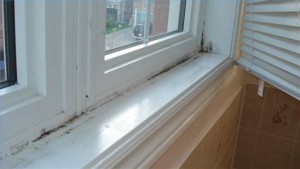Studies have shown there is sufficient evidence to link indoor exposure to mould with upper respiratory tract symptoms, coughing and wheezing in otherwise healthy individuals. It has also been shown to aggravate symptoms in those with asthma.
The Centres for Disease Control and Prevention, the CDC in the United States, says on its website that studies have suggested there is a possible link to early exposure to mould in the development of asthma in some children, particularly if there are genetically susceptible. It has been suggested that improving the home environment can reduce the development of asthma in those who are susceptible.
Here at home, Health Canada points out that the elderly and those with a weakened immune system or other conditions such as severe allergies or other respiratory conditions such as COPD are also more vulnerable to the effects of moulds in the environment.
 These spores can enter your house through doorways and windows, as well as heating, ventilation, and air conditioning systems with outdoor air intakes. They can also be carried into the home on people and pets.
These spores can enter your house through doorways and windows, as well as heating, ventilation, and air conditioning systems with outdoor air intakes. They can also be carried into the home on people and pets.
If there is excessive moisture in the house, such as where there has been flooding or in commonplace areas such as roofs and basements, spores circulated by the home ventilation system can find a place to grow.
Wet paper and paper products, cardboard, ceiling tiles, wood, and wood products are all places where mould spores can thrive. Dust, wallpaper, insulation materials, drywall, carpet and upholstery, also commonly support mould growth.

R.C. White Ltd. is a member of EACO, the Environmental Abatement Council of Ontario. If you are unsure of your ability to remove any amount of mould safely and effectively, you can contact us for advice.
